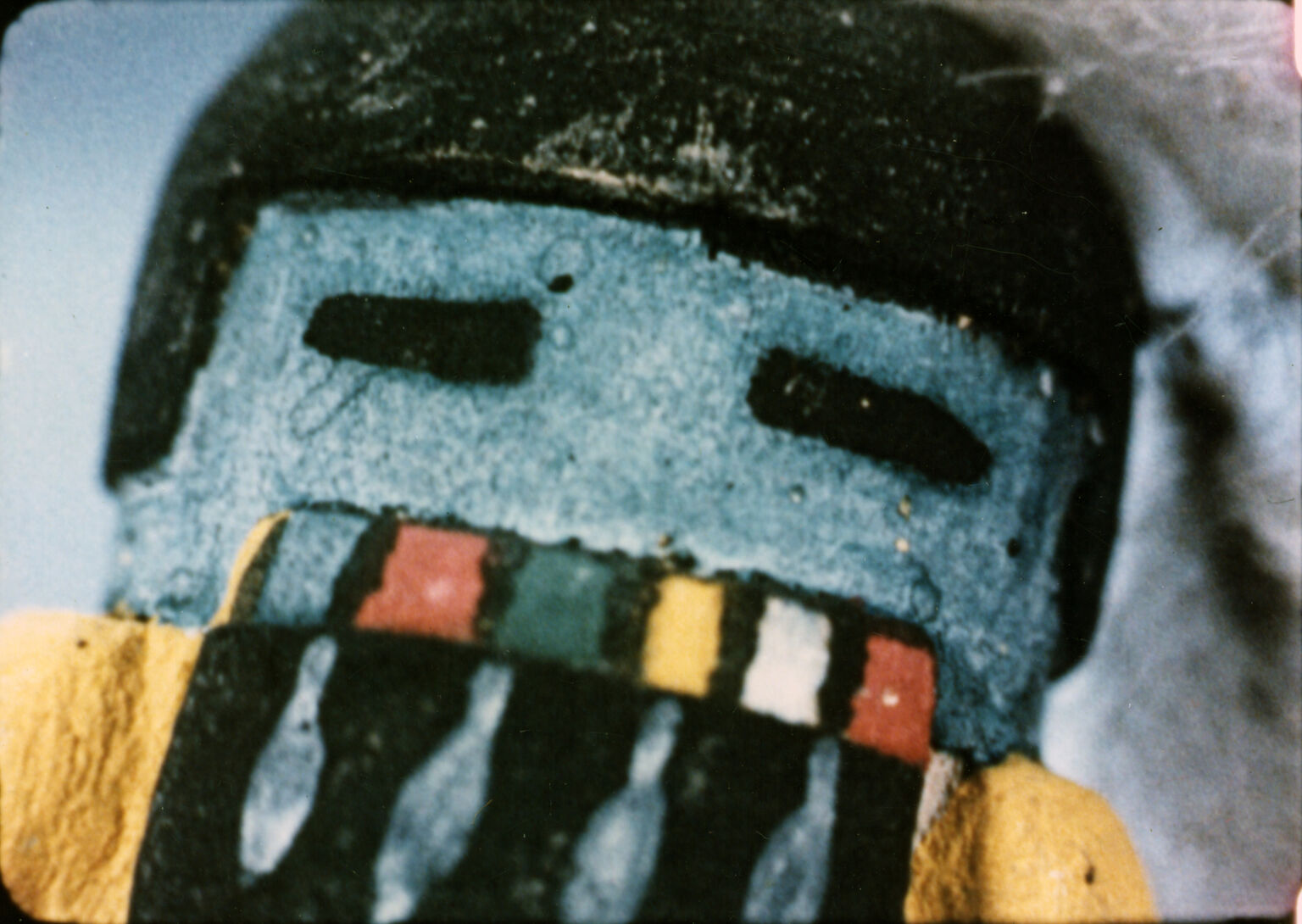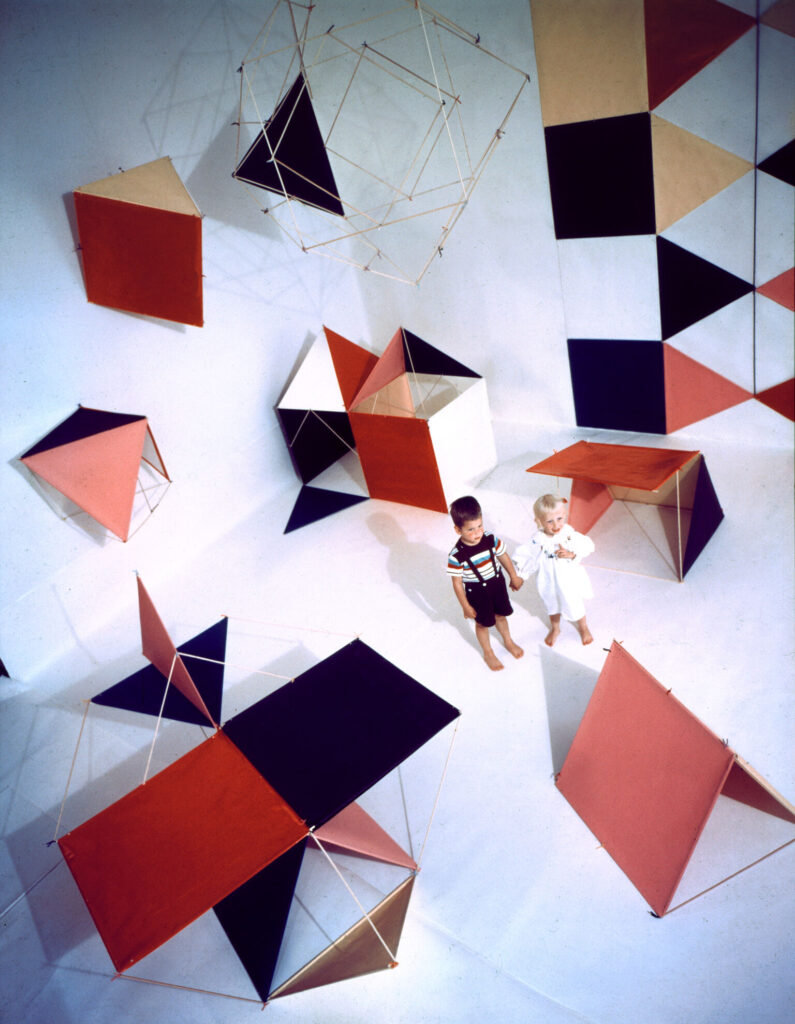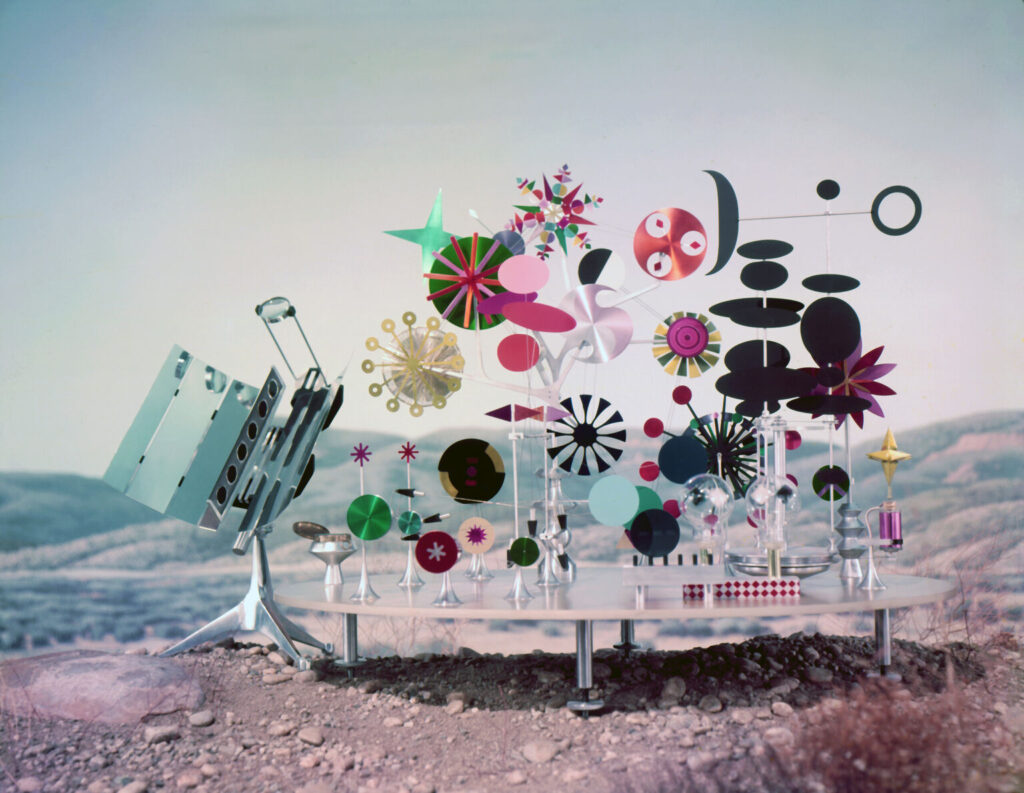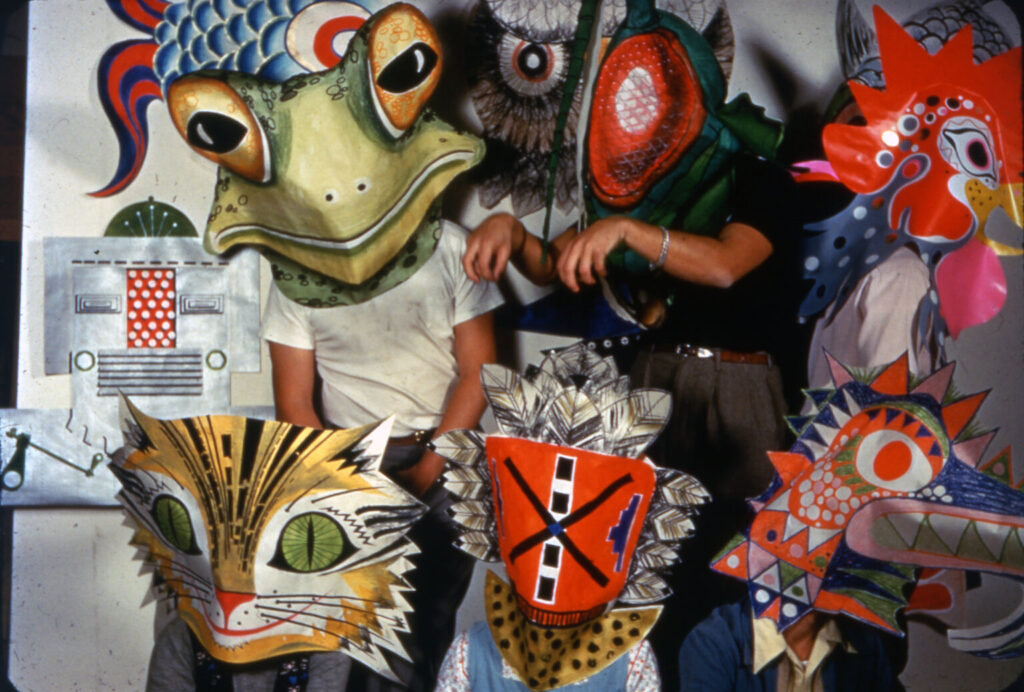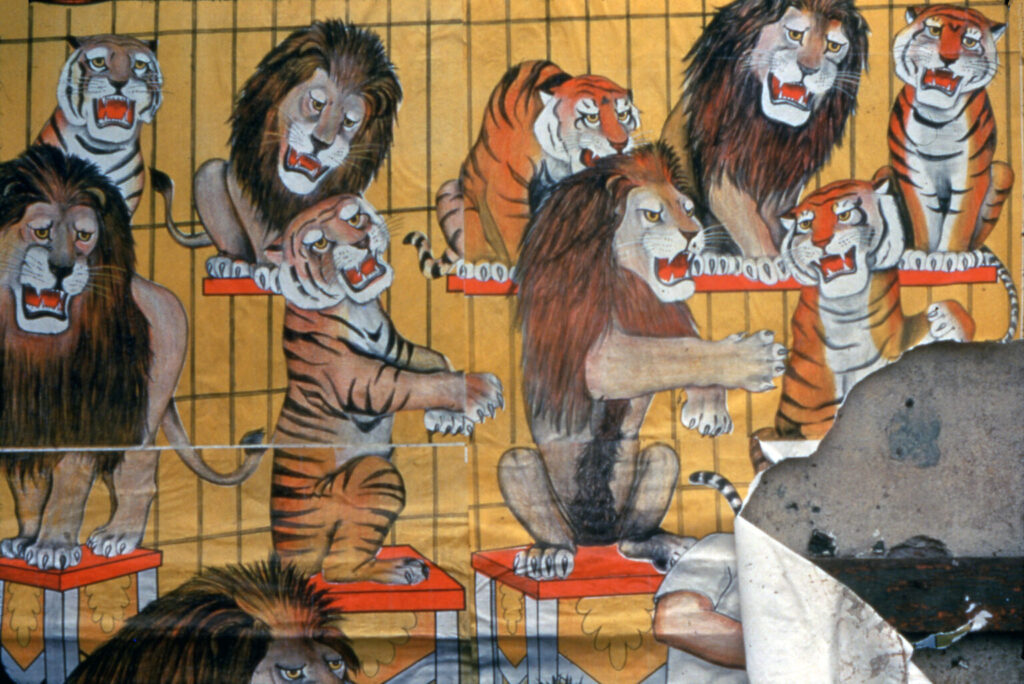Charles and Ray created over one hundred and twenty-five short films during their careers, often to present a concept to a client like IBM, explain an idea, or educate about history. Topics were as eclectic as the two designers: furniture (Fiberglass Chairs), science (Powers of Ten), the environment (National Fisheries Center and Aquarium), mathematics (Mathematics Peep Shows), art (Cézanne), technology (Cable: The Immediate Future), and the lifestyles of different nations (Banana Leaf).
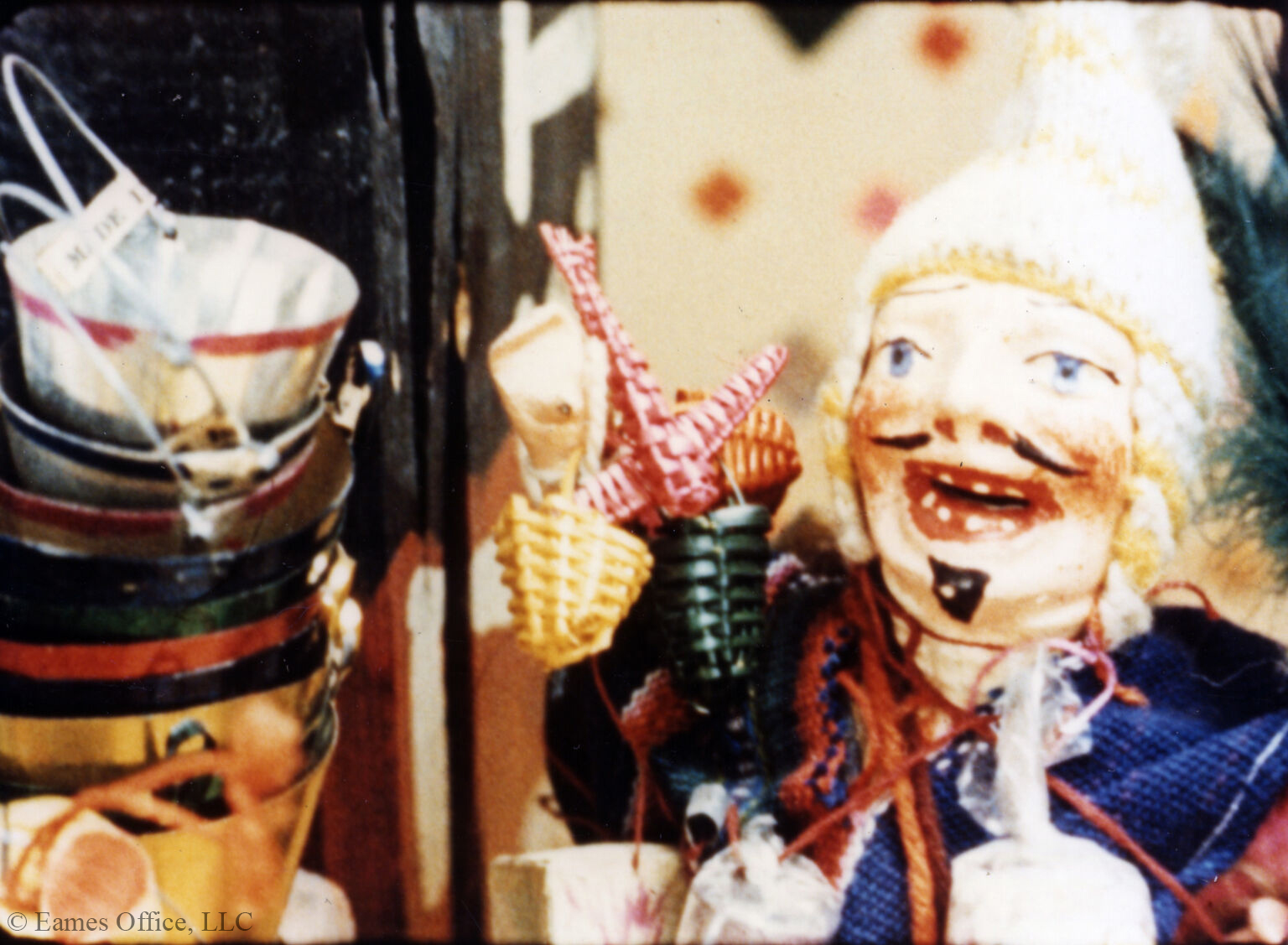
However, the most frequently explored subject of Eames films was toys. The 1969 film Tops is a celebration of top-making and spinning, featuring one hundred and twenty-three different tops set in motion to the accompaniment of a score by Elmer Bernstein. Polavision Vignettes: Kites was an instructional video for kite building. And, while several Eames films featured toys as a subject, others used toys as actors. For example, the 1957 film Toccata for Toy Trains, and the 1952 film Parade, employed a cast of toys starring in live-action narratives.
Traveling Boy, completed in 1950, has the distinction of being Charles and Ray’s first film. Like Toccata and Parade, Traveling Boy uses toys as central characters to tell a story: a Japanese windup toy with a suitcase encounters other windup toys and objects along his journey. It co-starred an assortment of toys from around the world that the Eameses had on hand and toys found in local shops and Chinatowns across the country. Photos and posters from Charles’s circus photography and drawings created by Saul Steinberg served as the backdrops for the various colorful scenes.
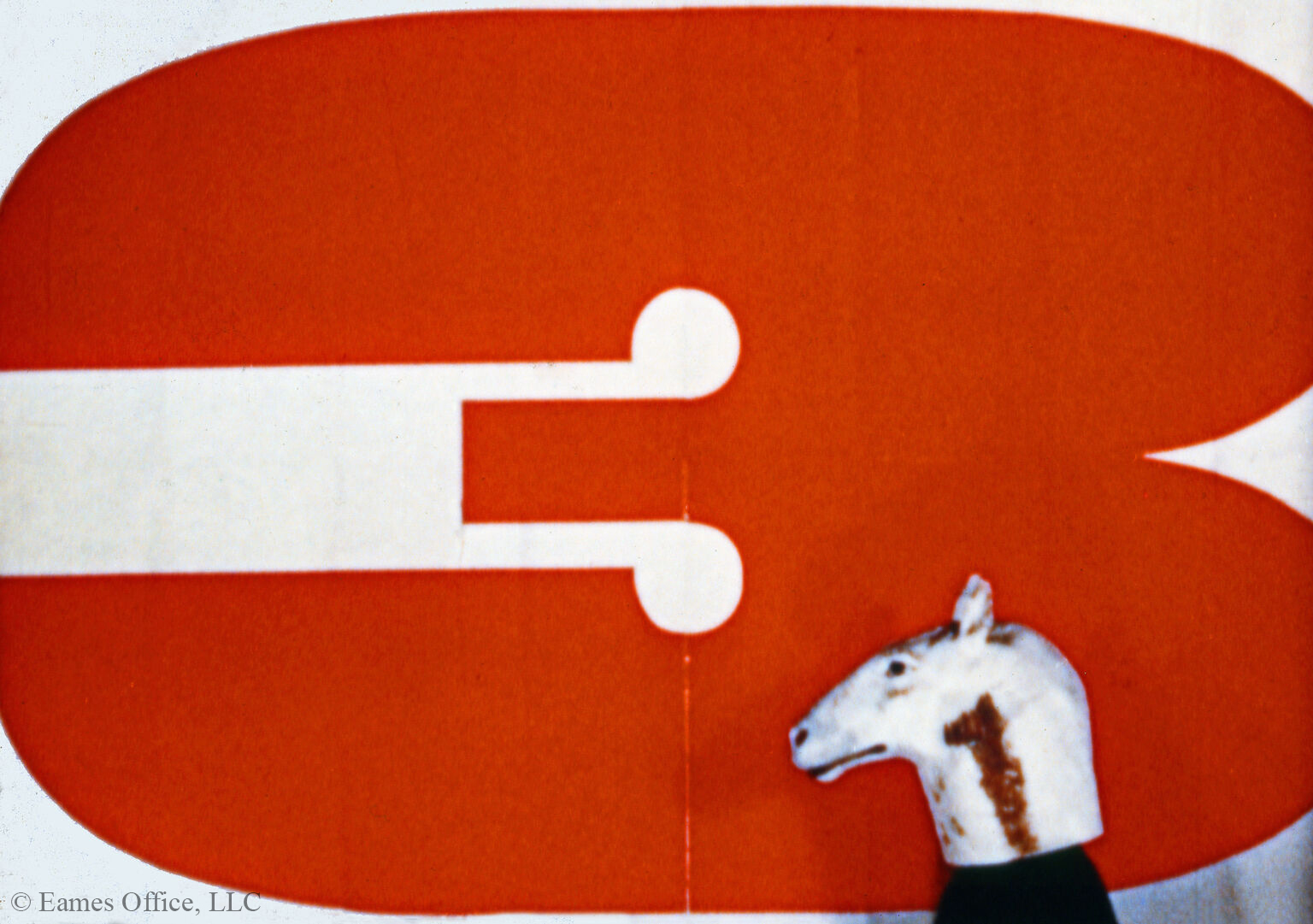
Traveling Boy contains no musical score, defining it as relatively unique in the Eames film library. The Eames Office later collaborated with various composers to score their films. It also has no narration, but the story of a young person’s first solo adventure feels straightforward.
While less expensive than human actors, using windup toys did not always make the process easier. According to the Eames Office staff, rehearsals tended to go smoothly, but when filming began, toys (particularly windup toys) would frequently malfunction. However, working through problems seemed an essential rite of passage for the young, budding filmmakers.
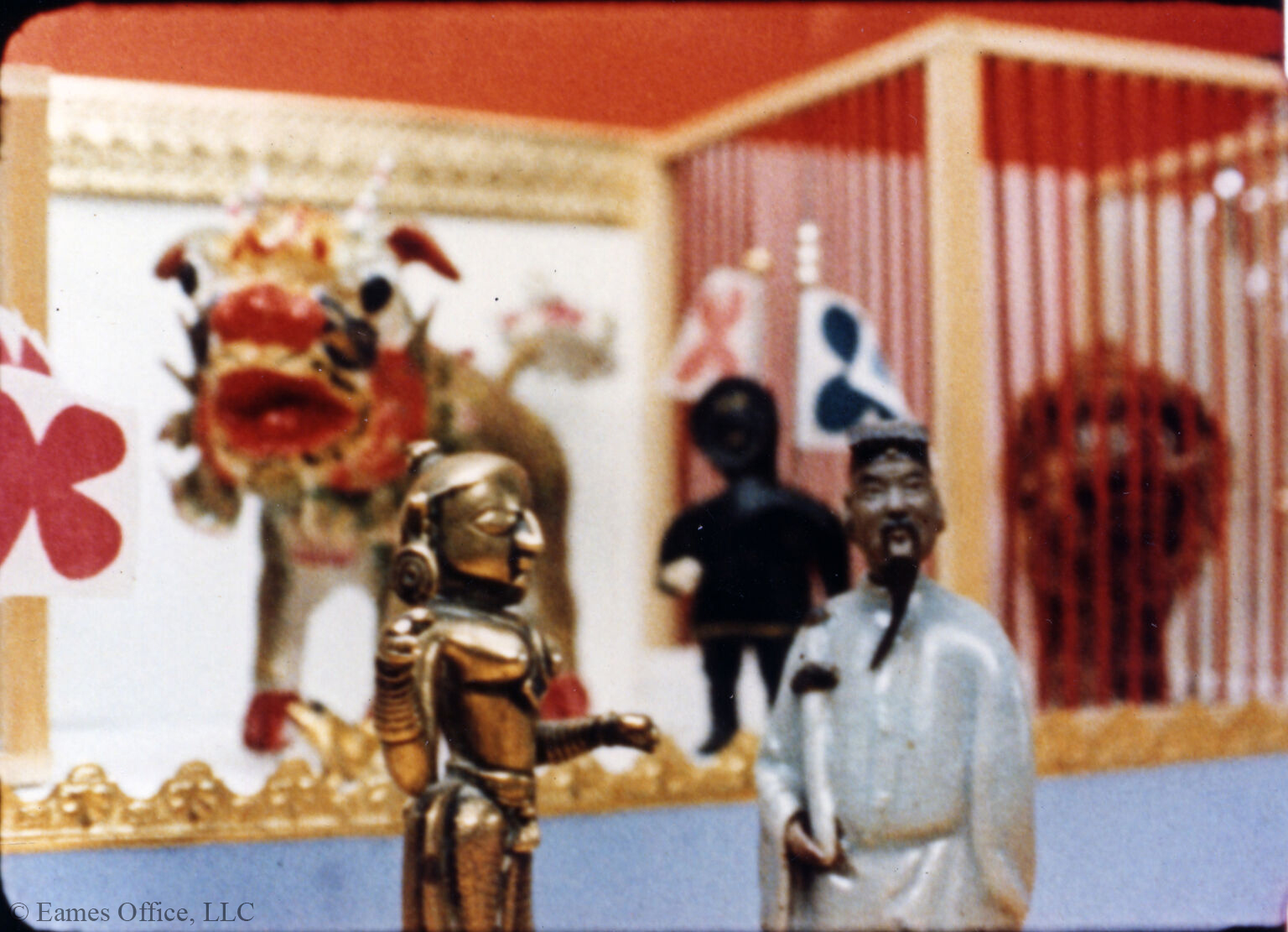
As an amateur filmmaker, it was imperative to Charles that he learned the skills in a very hands-on way. Two years after Traveling Boy, Charles shot the 1952 film Blacktop using a hand-held 16mm Cine-Special camera. This camera does not allow the operator to view the subject directly through the lens, making the cinematography difficult for an amateur. Additionally, it was the first time Charles edited a film using dissolves to transition scenes. With Toccata, he used colored pencils to color code strong and weak beats on the music tape, so visually and rhythmically, he knew how to edit the film.
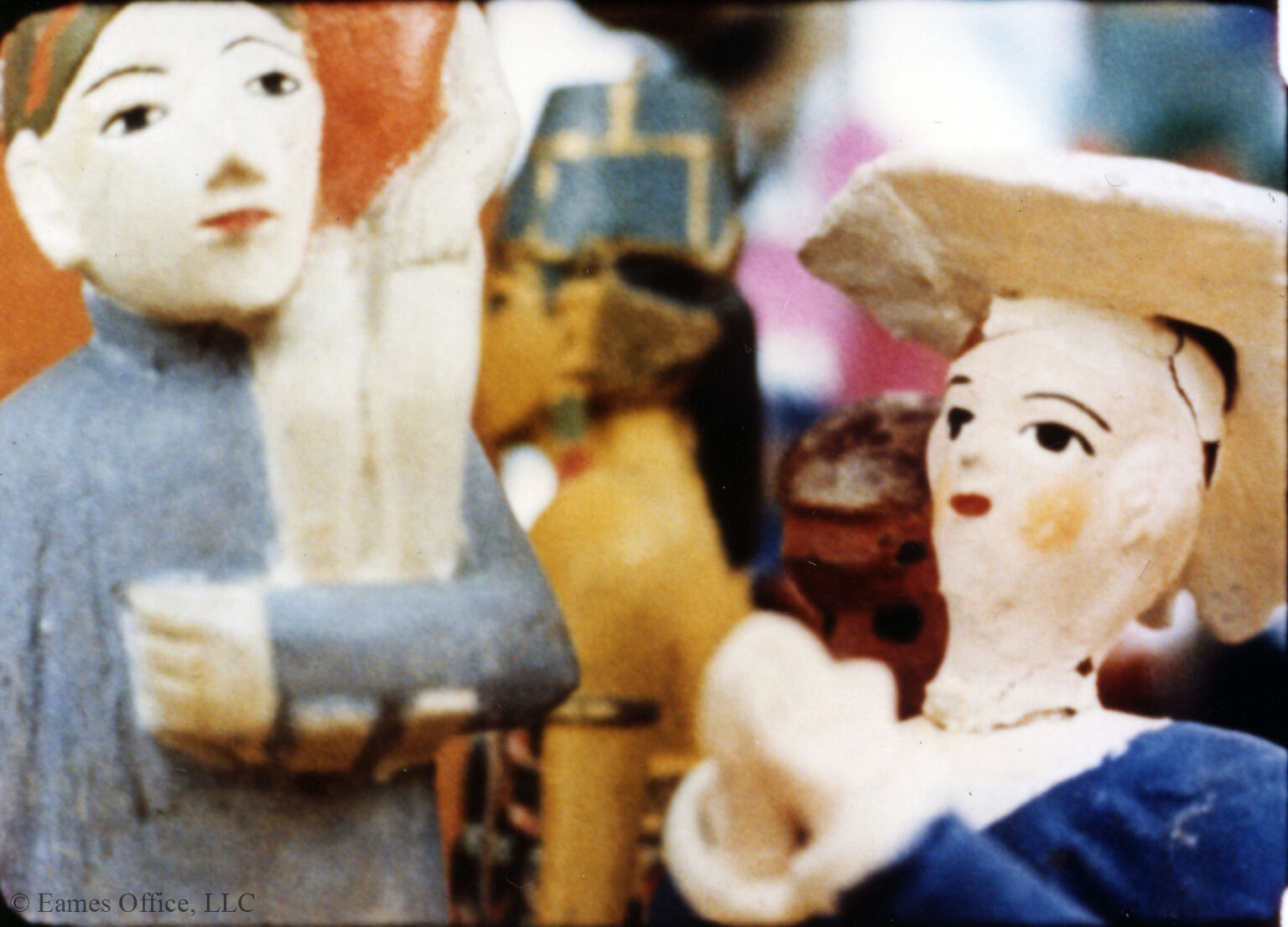
Charles and Ray’s decision to make Traveling Boy was simple. Friend and screenwriter Philip Dunne had loaned them his 16mm movie projector, and they set off to create a film with no budget. This rented camera did not have a close-up lens, which would have been vital for a tabletop-film starring toys. Charles improvised with a makeshift extension ring he created from cardboard, allowing him to shoot close-ups by recalculating the exposures. He also devised a rewind system using plywood and wooden dowels to hold the film reels while he cut and edited the film. Eames Office staff members provided voluntary help and the outcome was a 12-minute fictional film and plenty of learning experiences.
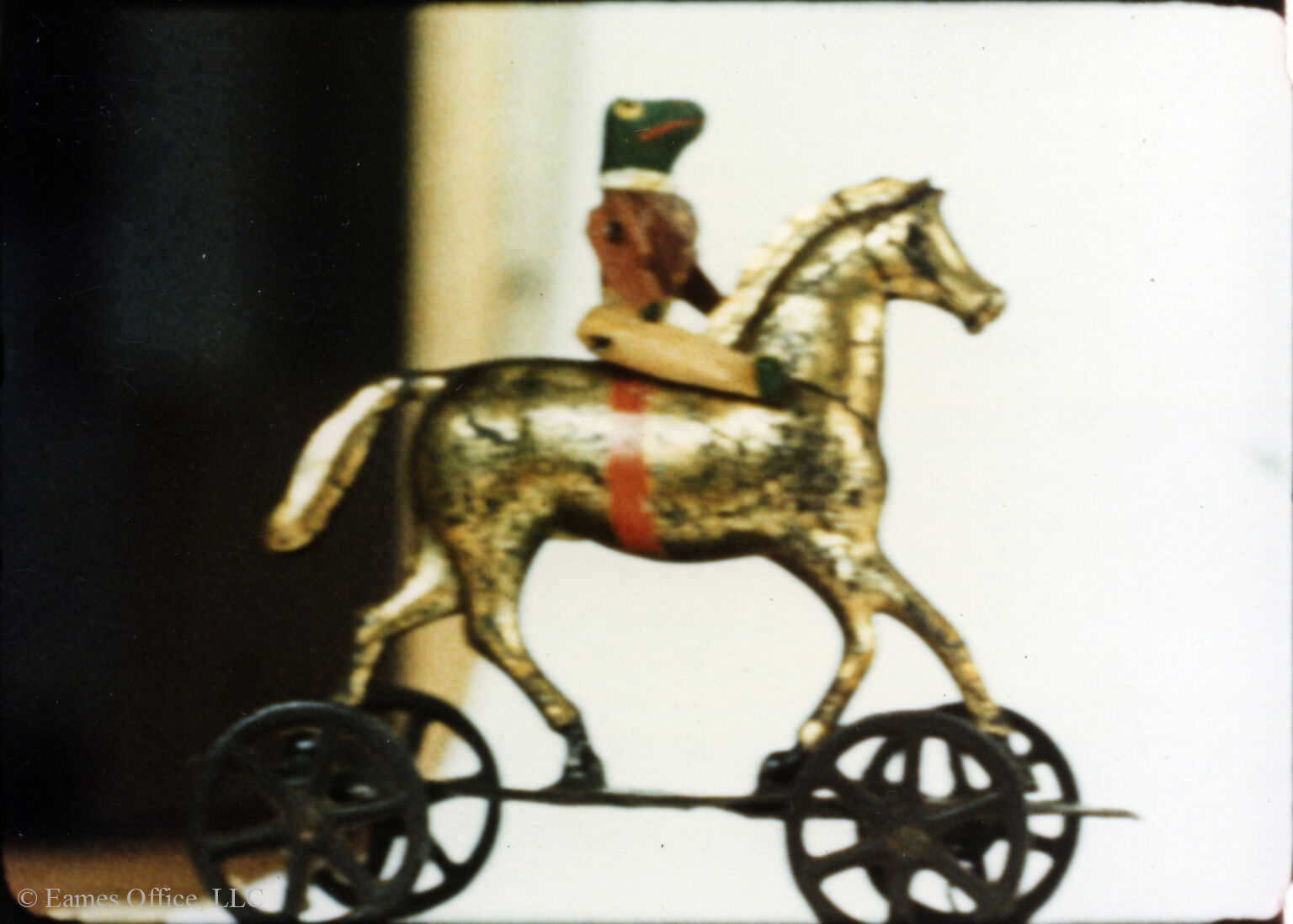
Three different end scenes were filmed for Traveling Boy, and surprisingly, Charles and Ray never selected the final ending. The film was not shown publicly during Charles and Ray’s lifetimes, but instead screened for audiences of friends and staff. The outcome of this project was more than a 12-minute fictional film—its lessons helped grow Charles and Ray from curious amateurs into experienced filmmakers.
